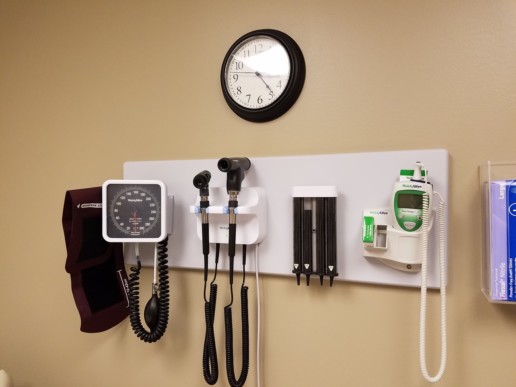How to bridge the health insurance knowledge gap for younger employees
More often times than not, when younger employees are searching for their own health insurance plans, they make common and costly mistakes due to the lack of education in regards to health care plans. Proper education could help the young generation of employees for their health, wellness, and future. Read this blog post to learn more.
With the passage of the Affordable Care Act, young adults were able to stay on their parents health insurance plans until the age of 26. But once they get their own health insurance, many young employees make common and costly mistakes because they don’t have the proper education when choosing their own programs.
This information gap could result in employees being hesitant to seek care, resulting in higher medical expenses for employees and reduced productivity from sick leave.
“It’s a challenge— there’s a fair number of employees that will come off of their parent's insurance at the age of 26,” says Amanda Baethke, director of corporate development at Aeroflow Healthcare. “There's not a lesson that you go through in order to understand insurance.”
Employers can help bridge this gap through proper training and communication strategies. In a recent interview, Baethke shared her thoughts on how employers can provide this extra education and what they can gain from it.
How can employers help younger workers avoid health insurance mistakes?
It's beneficial for HR to do a training where they're going over what co-pays, premiums, deductibles and coinsurance are. When signing up for insurance, employees are trying to decide which insurance to pick and may not understand the full impact of that decision. Employees could pick the cheapest one because they want less out of their paycheck. There's just not a lot of discussions happening and employees are left blind.
What mistakes do young workers make when it comes to health insurance?
I’ll get a lot of questions from my team like ‘What’s an HSA and what’s the benefit?’ It's truly a lack of understanding, because nobody teaches it. A lot of mistakes will happen with out-of-network providers. They don't realize that there are insurance networks and then within those networks, there are more narrow networks underneath.
For example, an employee can call a doctor's office and ask if that office is in-network and the receptionist may respond that they are — especially for the national brands like UHC, Aetna, Cigna, Humana. However, many of those plans have narrow networks under them that allow them to better control cost. So the employee would want to ensure their particular group/plan is in-network.
Another thing is making sure employees know that even though they have a deductible, some preventative care is likely covered under their insurance. This will help them choose the right physician so if they do get sick later on, they can see that physician, rather than going to a hospital which would be more costly for them.
What specific role should HR take when it comes to educating younger employees about health insurance?
HR is responsible for making sure that employees understand the benefits that they're offering. HR works incredibly hard to deliver the best benefits possible and advocate for each and every employee. So why not just go the extra step and have a consultation with the insurance company to explain what the benefits mean, what is covered, what may not be covered, how to really navigate through the insurance company and work back with them.
SOURCE: Schiavo, A. (19 October 2020) "How to bridge the health insurance knowledge gap for younger employees" (Web Blog Post). Retrieved from https://www.employeebenefitadviser.com/news/how-to-bridge-the-health-insurance-knowledge-gap-for-younger-employees
Just 28% of Americans expect to return to the workplace before 2021
According to a recent study from a Conference Board Survey, only 28 percent of Americans expect that they can return to the workplace before the year 2021. Although that percentage has increased, many are still uneasy about the idea of returning to public spaces. Read this blog post to learn more.
Just 28% of Americans say they already have or expect to return to workplaces before the end of the year, indicating the coronavirus pandemic is making remote work more mainstream, a Conference Board survey showed Thursday.
Nearly one-third of respondents said they would be uncomfortable getting back to offices, shops and factories, while half said their greatest concern was contracting the disease at work, according to the Sept. 16-25 online survey of more than 1,100 workers. Only 17% of employees said they were very comfortable or even wanted to return.
The coronavirus continues to spread across the U.S., with 34 states recording higher seven-day averages of new cases compared with a month ago. While progress is being made on a vaccine, it will be months before it’s available to the general public. Even when it is ready, the Conference Board’s survey showed just 7% expect a return to their workplace.
“For knowledge workers and others where remote working is an option, you’re going to see more of a remote or hybrid working arrangement become the standard way,” said Rebecca Ray, executive vice president of human capital at the Conference Board.
A cultural shift to working from home and the pause or stop in business reopenings have upended the commercial real estate market. Federal Reserve Bank of Boston President Eric Rosengren warned that a resurgence in the virus could lead to troubles in the financial sector via commerical real estate.
The “commercial real estate sector is going to be impacted in the long term as we now need much less space for offices, retail, and probably higher education,” said Gad Levanon, head of the Conference Board Labor Markets Institute.
The Conference Board’s survey echoed with a recent poll of company executives by Cisco Systems. More than half plan to downsize their offices as remote working will become commonplace after the pandemic subsides, according to the Cisco survey.
The Conference Board survey also showed that lower-ranking employees are more concerned about returning. Some 20% of rank-and-file workers and 21% of front-line managers indicated they feel pressure to return in order to keep their jobs, compared with just 4% of executives. Individual contributors are also the least comfortable coming back to job sites.
Some 29% of respondents said they had little faith that their colleagues would adhere to safety protocols and guidelines upon return. One-third questioned the wisdom of going back to workplaces because they said productivity has remained high when working remotely, the survey showed.
SOURCE: Ren, H. (15 October 2020) "Just 28% of Americans expect to return to the workplace before 2021" (Web Blog Post). Retrieved from https://www.employeebenefitadviser.com/articles/just-28-of-americans-expect-to-return-to-the-workplace-before-2021
Every dollar counts in today’s zero-interest-rate environment
It’s no secret that interest rates have been at historically low levels for quite some time, but the recent announcement by Federal Reserve Chairman Jerome Powell indicates that rates will stay near zero for the foreseeable future. Chairman Powell stated in his address last month that the Fed would tolerate above-2% inflation instead of attempting to preemptively control inflation by raising interest rates.
With rates likely to remain low, investors, and especially participants in sponsored 401(k) plans in the U.S. retirement system, need every dollar they can save to achieve their goals in retirement. This is particularly true this year, with the COVID-19 pandemic having inflicted significant disruption, uncertainty, and volatility on our nation’s workforce as well as the financial markets.
Even before the pandemic, low interest rates were already hitting Americans enjoying or nearing retirement very hard, because lower rates for annuities and money market accounts require people to save more when trying to convert savings into income. The indexing of Social Security benefits at lower rates also decreases income in retirement.
Stop automatically cashing out terminated participants’ small-account balances!
Since every dollar counts for plan participants in our pandemic-disrupted, zero-interest-rate environment, why are sponsors (who have a duty to adhere to the fiduciary standard) continuing to cash out small, stranded accounts with less than $1,000?
The Employee Benefit Research Institute (EBRI) estimates that a total of $92 billion in hard-earned savings leaks out of the U.S. retirement system every year because 401(k) plan participants prematurely cash out their accounts when they switch jobs. Conducting automatic cash-outs for terminated participants adds to the already sizable leakage of assets from our nation’s retirement system.
As we have noted in previous articles in this space, the primary driver of cash-out leakage is the lack of seamless plan-to-plan asset portability for participants at the point of job-change — and the resultant costly and time-consuming nature of DIY portability.
Boston College’s Center for Retirement Research has reported that, on average, premature cash-outs decrease participants’ total 401(k) assets for retirement by 25%. Cashing out 401(k) savings early is perhaps the worst blunder that a retirement-saver can make. But when sponsors automatically cash out small accounts, they potentially open themselves up to new fiduciary liability down the road.
After all, if a terminated participant has moved to a new house or apartment in the years since working for a former employer, and the new mailing address has not been updated in the files of the plan sponsor’s recordkeeper, then the check for the cashed-out small balance may not reach the accountholder. If that occurs, and the accountholder finds out the assets in their former-employer 401(k) account were lost, the employer could be sued, or the plan could be the focus of a regulatory inquiry.
Auto portability can eliminate the need for automatic cash-outs and rollovers
By adopting the technology solutions which enable auto portability, sponsors can potentially avoid having to conduct automatic cash-outs and automatic rollovers to keep their average account balances and related metrics at healthy levels.
Auto portability — the routine, standardized, and automated movement of a retirement plan participant’s 401(k) savings account from their former employer’s plan to an active account in their current employer’s plan — is powered by “locate” technology and a “match” algorithm. Together, these innovations locate lost and missing participants, and kick-off the process of moving their savings into 401(k) accounts in their current-employer plans.
Auto portability also has the power to make automatic rollovers of small accounts into safe-harbor IRAs a redundant practice. Placing terminated participants’ assets for retirement into safe-harbor IRAs in a low-interest-rate environment isn’t exactly benefiting them, since the only default investment options allowed in safe-harbor IRAs are principal-protected products. The combination of low yields and high fees in too many safe-harbor IRAs can deplete accountholders’ assets over the long term.
The capability to begin the movement and consolidation of 401(k) assets as participants change jobs, as well as reunite lost and missing participants with their 401(k) savings, can help decrease cash-out leakage — and savings depletion — at a time when every dollar in the U.S. retirement system counts more than ever.
EBRI estimates that the widespread adoption of auto portability by sponsors and recordkeepers would preserve up to $1.5 trillion (measured in today’s dollars) in our nation’s retirement system over the course of a 40-year period, primarily for the benefit of low-income workers. Based on EBRI data, Retirement Clearinghouse estimates that widespread adoption of auto portability would preserve $619 billion in savings for 67 million minority participants in the U.S. retirement system — including $191 billion for 21 million African-Americans.
Fortunately, auto portability has been live for more than three years, and it’s available to help sponsors make every dollar count for participants during these extraordinary times.
SOURCE: Williams, S. (07 October 2020) "Every dollar counts in today’s zero-interest-rate environment" (Web Blog Post). Retrieved from https://www.benefitnews.com/opinion/every-dollar-counts-in-todays-zero-interest-rate-environment
Here's your employee checklist for open enrollment
The COVID-19 pandemic has focused consumer attention on health care, germs and the impact a single illness can have on their lives, livelihoods and loved ones. With the fall open enrollment season almost here, you have the opportunity to think more critically about the specific plans you choose for yourself and your family, as well as any voluntary benefits that may be available to you, including childcare, elder care and critical illness. In a world where it feels like health is out of the individual’s control, we all want, at the very least, to feel control over our coverage.
As we know all too well, there’s a lot to consider when it comes to choosing and using health care benefits. The most important piece of becoming an informed health care consumer is ensuring you have access to — and understand — the benefits information you need to make smart health care choices.
While open enrollment may seem daunting, devoting an hour or two to reviewing your plan options, the programs available to support you and your family physically, mentally and financially, and how to get the most from the coverages you do elect, can go a long way towards providing peace of mind as we face the unknowns of 2021. Here are five tips to keep in mind as you prepare for and participate in open enrollment.
Don’t forget that preventive care is covered by most plans at 100% in-network regardless of where that care is received. Schedule your appointments as soon as possible (and permissible in their area), and research other venues for receiving care, such as pharmacies, retail clinics and urgent care facilities. Most are equipped to provide standard vaccinations and/or routine physicals.
Unfortunately, there are also the long-term implications of COVID-19 to consider. Research suggests that there are serious health impacts that emerge in survivors of COVID-19, such as the onset of diabetes and liver, heart and lung problems. And many who were able to ride out the virus at home are finding it’s taking months, not weeks, to fully recover. As a result, you should prepre for the possibility that you, or a loved one, may be ill and possibly out of work for an extended period of time. Be sure to evaluate all of the plans and programs your employer offers to ensure your family has the financial protections you need. For some, a richer health plan with a lower deductible, voluntary plans such as critical illness or hospital indemnity insurance, and buy-up life and disability insurance may be worth investigating for the first time.
As hospitals reopen, it may be difficult to schedule a procedure due to scheduling requirements and pent up demand. A second opinion may be in order if your condition stabilized, improved or worsened during the delay; there may be other treatment options available.
A delay in scheduling also provides an opportunity to “shop around” for a facility that will provide needed care at an appropriate price — especially if you are choosing to go out-of-network or have a plan without a network. Researching cost is the best way to find the most affordable providers and facilities with the best quality, based on your specific needs.
Many medical plans offer second opinion and transparency services, and there are independent organizations who provide “white glove,” personalized support in these areas. Read over your enrollment materials carefully, or check your plan’s summary plan description, to see what your employer offers. If nothing is available, ask your employer to look into it, and don’t hesitate to do some research on your own. Doing so can often result in substantial cost savings, without compromising on quality of care.
Be sure to check up on your preferred health care providers — especially those you might not see regularly — to confirm they are still in business and still in network (if applicable). If you live in a rural area, you may have to travel farther to reach in-network facilities. If you’re currently covered by an HMO or EPO, you may want to evaluate whether that option still makes sense, if your preferred in-network providers are no longer available.
When was the last time you changed your medical plan? If you’ve been keeping the same coverage for years, it might be time to look at what else is available. Your employer may have introduced new plans, or you may find that a different plan makes more sense financially based on how often you need health care. Don’t forget — the cheapest plan isn’t always the one with the lowest premiums.
You may also want to consider setting aside funds in a health savings account or health care flexible spending account (if available). If your employer offers a wellness program, this might be an opportunity to start adopting better health habits to ensure you’re better equipped physically and mentally to deal with whatever lies ahead.
3 tips to boost your healthcare literacy with technology
Historically, the relationship between consumers and their health plan providers has been a distant and somewhat bumpy one. Some health plan providers get a bad rap for poor communications, leaving consumers on their own to navigate a health care system wrought with confusing language, red tape, and unpredictable costs.
The events of a global pandemic have compounded the complexity of dealing with the healthcare system. A recent J.D. Power Survey found that more than 60% of privately insured U.S. health plan members did not receive any guidance about COVID-19 from their providers. The lack of healthcare literacy — knowing what questions to ask and where to get care — has also created a bigger gap between everyday people and their providers. But the good news is technology can help us get more out of our benefits, making our relationship with health plan providers more connected.
The COVID-19 pandemic has exposed the need for more TLC and attention when it comes to benefits. But technology can help us get the most out of our benefits — strengthening our consumer relationship with health plan providers. By engaging with technology, we can improve our healthcare literacy, identify cost-saving opportunities and be more prepared for the unexpected.
If consumers are going to make an informed decision during open enrollment, they’ll need information about the number of visits they paid to the doctor and the costs of their claims to determine if they should change plans. Maybe they’re paying a lot more in premiums, or perhaps they didn’t meet their deductible. Being engaged with your benefits is key to getting the most out of them.
Tip: Avoid going on autopilot with your benefits. Benefits offerings are always changing, and health providers often offer programs that you can opt-in to free. Make sure you’re set up to receive notifications from your benefits administrators and health plan providers. Then take action. Use the preventative care offerings, likes annual wellness check-ups, and enroll in the programs that will serve you now and in the future.
During the pandemic, there has also been an increase in the use of AI to improve communication across the healthcare ecosystem. For example, patient care in the emergency room (ER) is traditionally delivered numerically — first come, first serve. However, AI can help doctors and caregivers at hospitals prioritize the needs of waiting patients. This can lead to a decrease in wait times in crowded hospitals — especially important during the pandemic. In the same vein, AI can help an individual decide if they truly need to visit the ER or if a telehealth option would be more effective and affordable.
Caregiver support platforms, like Cariloop, are using cloud-base technology to improve communication between providers, consumers and their families. This employer-sponsored benefit offers tailored caregiving plans and coaching for families looking for pediatric and senior care. Cariloop, and other caregiver support platforms, use technology to tap into a system of trusted providers and build caregiving scenarios with planning and calculator tools. Users can adjust for different scenarios, review whatresources are available, and receive personal coaching throughout the caregiving journey.
Tip: Viewing benefits as an item to check off a list once a year means you might be overpaying or leaving benefits on the table. Using claims integrations and decision support tools, like planning calculators, can help you and your family fully engage with your benefits and improve your healthcare literacy.
Benefits administrators and health plan providers are beginning to see the importance of supporting the whole person — through mental wellbeing initiatives or by offering online tutoring discounts, streaming virtual fitness programs, and food delivery services.
Tip: Look to the different options that providers use to deliver holistic and preventative care options. For example, year-long access to audio-guided meditation apps like Headspace or programs built around the use of wearable technology that rewards users who meet personalized activity goals. These initiatives go beyond regular patient care and give you tools to support your wellbeing — not just when you’re feeling under the weather.
3 tactics to navigate company culture in a remote world
In many respects, COVID-19 reframed our thinking about worklife balance. While this was already a fatigued concept, the pandemic and resulting quarantine fully demolished the fourth wall that stood between work and the personal lives of our team members.
In the early weeks, given our technology enablement already in place, a near immediate shift to fully virtual didn’t seem like a huge shift for many. As the weeks wore on, working parents and those with different challenges at home felt the effects almost immediately. As a working mom myself, I have first-hand experience around what it means to be a mom and an employee at the same time and in the same space, along with my partner also working from home. In fact, my daughter may or may not have “Zoom bombed” a session with our board. Of course, none of them were bothered by it and it probably embarassed me more personally than anything.
As the chief people officer of SailPoint, I’ve seen how balancing continuing to educate our children from home while working full time has taken a toll on many. Half of our workforce have children under the age of 18 living at home. To move forward as a distributed workforce in a way that is sustainable and productive, HR teams need actionable steps to empower today’s working parents.
By implementing specific guidelines that help employees navigate these waters, HR teams can better instill confidence in their employees and provide them with the resources required to drive successful and productive engagement. Small changes, simply starting with an acknowledgement of this issue, helps teams to get their work done on the terms they’re able to design to best fit their needs.
Give employees the formal gift of time
When the pandemic began earlier this year, SailPoint’s approach was centered on “returning to normal.” It’s clear now that a return to normal is not in the cards, and organizations should look at this time as an opportunity to rebuild and create lasting culture changes through new programs and initiatives.
One strategy we’ve found successful at SailPoint is implementing a 2-hour block twice a week when employees have no meetings and can focus on what is most important to them individually. This could range from taking care of their children to getting a presentation done that they haven’t had time for, or even scheduling personal appointments. Whatever it may be, this block we call ‘Free2Focus’ is about giving our crew space to balance the personal demands with the work demands. So far, the response to this time block has been very positive and it allows SailPoint crew members to use their time during the day how they wish in a flexible but formal way. Some crew members are using this time to focus on helping their children with school work, others have used it to have lunch with loved ones. Given that much of schooling from home may fall to women, we also look at this as an inclusion initiative to ensure that part of our workforce isn’t faced with a choice of one or the other.
Restructure your physical office
One aspect of corporate culture that was long overdue for restructuring is the use of the physical office space. At SailPoint, we’ve always offered our crew members flexibility, and this extends to trusting them to decide where they work. We believe that work is our identity, not our cubicle, and COVID-19 has presented us all an opportunity to rethink the office space.
As of September, we have allowed crew members to voluntarily return to the office if they wish at 25% capacity. Moving forward, we’re asking the crew to think of our offices like they would a college library. In college, you would likely go to the library for a place to focus or a place to meet with otehrs. This is how we want the SailPoint offices to operate because we know our crew makes the most impact when they have the autonomy to make their own decisions that work for the individual, their family and their work. There is not a one-size-fits-all when it comes to working styles and personal situations, which is why we want our physical office space to be as flexible as our remote office space.
Commit to community
While this time may have brought us closer to our families, it can be isolating from an employee culture perspective. Some of us are lucky enough to have family support at home, but many do not. It’s crucial that those looking for companionship and emotional support are able to find it, within our community.
Having a strong culture in place is not only invaluable for the individual’s well-being but also vital in keeping employees engaged and motivated. One strategy to achieve this is taking advantage of the technology that connects us. At SailPoint, we have several Slack channels that aren’t related to work to keep our community connected. We have channels for parents, pet lovers, beauty gurus, Texas Longhorns and more, but we also have a channel called SAIL ON. This particular channel is a place for people to post supportive messages, or to just have fun and connect with their community of crew members. So far, this initiative take on a life of its own, as we’ve seen our crew organize fitness competitions, build standing desks for each other’s homes, share their thoughts on "Feel Good Fridays.”
SOURCE: Payne, A. (23 October 2020) "3 tactics to navigate company culture in a remote world" (Web Blog Post). Retrieved from https://www.employeebenefitadviser.com/list/3-tactics-to-navigate-company-culture-in-a-remote-world
3 small business leaders on what it takes to survive the pandemic economy
Now more than ever, business leaders are having to take the roads less traveled when it comes to allowing their businesses to succeed. The pandemic economy has caused many to struggle, and many are stepping out to talk about what they've learned. Read this blog post to learn more.
Building a business is never easy, but 2020 has been a unique calamity. In the U.S., which has suffered more COVID-19 deaths than any other nation, the economy entered its worst downturn in generations. Although central bank stimulus and government programs such as the Paycheck Protection Program have helped cushion the blow, a return to growth will depend on the creativity and resilience of millions of entrepreneurs and business managers.
Lindsay Gibson, COO, TextNow
Over a decade, TextNow built its business, an app that allows users to send and receive calls and text messages for free, by hosting ads for hotels and airlines and the like. Within weeks of the COVID-19 pandemic hitting the U.S. and Canada, one-quarter of TextNow’s revenue disappeared. The company closed its Waterloo headquarters, as well as offices in Portland, Ore., and San Francisco. All employees started working from home.
Lindsay Gibson, the chief operating officer, stayed relatively calm. A 16-year career at cellphone maker BlackBerry taught her how to navigate an organization on “a downward slope,” as she puts it. At BlackBerry, she once had to cut 250 jobs on her first day in a new role. She remembers it as the beginning of five years of doing more with less.
Her strategy then, and now, was to make plans. Plan A at TextNow was to slash revenue targets and cut expenses. The company eliminated 19 jobs, froze hiring, and ended employee perks such as personal trainers and free lunches. Biweekly companywide Zoom meetings were instituted to keep staff up to date and fortify plunging morale. For three months the mood became “very conservative, very heads down, and very focused,” Gibson says.
The company quickly found opportunities for growth. With so many people unable to visit friends or relatives, TextNow started testing a video chat function. Amid the economic downturn, hundreds of thousands of people could no longer afford to pay their AT&T or Verizon bills, so TextNow’s appeal increased. As school moved online, teachers began using TextNow to communicate with parents and students.
By July, TextNow was growing again. It lifted the hiring freeze and recruited a chief growth officer to beef up marketing and help win customers. TextNow is on track to meet or exceed its new revenue targets, Gibson says.
Brian Butler, president and CEO, Vistra Communications
Brian Butler is used to dealing with disaster. The Gulf War veteran — who still suffers from injuries and hearing loss sustained during his Army service — oversaw a munitions plant in Virginia at the time of the Sept. 11 attacks, helped coordinate Hurricane Katrina relief from the Pentagon, and started his marketing and communications business just before the 2008 financial crisis.
So in January, when he first read about a virus sweeping China, he started to prepare. In February he ordered five laptops for a core group of employees and by March had purchased 35. When other companies found themselves struggling to find equipment, his staff was settled and working from home. “I was a planner in the military,” Butler says. “I heavily rely on my ability to think and plan before I do.”
Still, in just a few months, Vistra lost two clients and three major contracts, including a hospital, a large beverage company, and a tourism agency that canceled events, contracts, or big projects. The company responded with an online campaign it called “V Positive.”
“We put up positive messages on a weekly basis,” Butler says. “That generated more good leads for us, just by doing that. So while in some areas we lost a few customers, in some areas we gained a few.”
In late May, the video of George Floyd’s death led to worldwide protests against police killings of Black Americans. Butler is Black, and 48% of his employees are people of color. Vistra started a new business line that offers tailor-made diversity training to customers.
As the months of working from home passed, Butler says he focused more on his staff’s well-being. He gave each employee $150 to “buy something that will help them work better.” The company, which already holds weekly and monthly video calls for staff, started including more informal Thursday morning coffees and Friday afternoon sessions with his father, a chaplain. Butler says the idea stemmed from his experience in the Army, where every battalion has its own chaplain. “And I thought, Hmm, why does it have to be different in the workplace?”
By late August, most of the clients the company had lost in the early days of the pandemic were back on Vistra’s roster. Butler says he’s working from his home for the foreseeable future, just a few miles from the office — and a few feet from the bedroom where he founded his company 13 years ago.
Melissa Wirt, founder, Latched Mama
Melissa Wirt thought she knew about juggling responsibilities. She founded Latched Mama to provide affordable, functional clothing for nursing mothers six years ago, when she had just two children. Today she’s the mother of five.
Then in February, the coronavirus shut down the factories of some of Latched Mama’s suppliers in China. It took a few more weeks before it hit her team — most of them working mothers — in Virginia. “So many moms’ lives, within a 24-hour period, were turned upside down,” she recalls. “Kids stopped going to school on a Friday and didn’t go back on a Monday.”
Wirt’s mother came up from Florida to help take care of her kids. Another mom couldn’t come to the office anymore when school and day care closed. “So her husband is now coming into work” and is on Latched Mama’s payroll, Wirt says, and the woman is doing social media work for the company from home.
In other ways, the work-from-home lifestyle proved a boon to Latched Mama’s business. Women are treating themselves to more comfortable clothes, boosting sales from last year, Wirt says.
Her staff, many at home or working half-shifts, weren’t able to pack and ship fast enough to meet the elevated demand. One of her employees got COVID-19 during the summer, and fear of the virus remained high.
So Wirt recruited teenagers, including a 16-year-old neighbor, to work part time. She also hired two people to manage shipments and warehousing, scooping them up from a nearby distribution company that went bust during the pandemic. “In some ways it’s an amazing problem to have,” Wirt says. “But it’s also hard as a small business because you also have to keep your employees safe. It’s just a lot of balls in the air at the same time.”
Productivity has ticked down. But Wirt says she feels that’s a small sacrifice in an unprecedented year.
“If we need to cut some profit to be able to make sure that people can relax and take a deep breath and be there for their kids and get through this pandemic together, then that’s what we’re going to do.”
SOURCE: Dmitrieva, K.; Kazakina, K.; Greenfield, R. (07 October 2020) "3 small business leaders on what it takes to survive the pandemic economy" (Web Blog Post). Retrieved from https://www.benefitnews.com/articles/3-small-business-leaders-on-what-it-takes-to-survive-the-pandemic-economy
Tackle growing healthcare costs with earned wage access
As open enrollment begins to trickle in, advisors are looking for new and improved ways to help employees to leverage out of pocket costs on the year that is upon them. For both and employers and employees, healthcare strategies are an integral part of workforce management. Read this blog post to learn more.
It’s that time of year when we all learn that health care costs are going up (again).
As the nonprofit Business Group on Health reported, the average employee will be hit with $15,500 in out-of-pocket costs next year, and the average employer will pick up about two-thirds of that tab. Even with shared responsibility, those are big hits for both employer and worker, which is why health care strategy must be integral part of workforce management.
However, benefits managers may not be aware of a tool that may help keep health care costs down for both employers and workers, and which lets employees more fully participate in the economy they helped create.
Earned Wage Access (EWA), sometimes known as on-demand pay, is a revolutionary benefit that I wrote about back in May. It comes at no cost to employers, and is available to workers at little or even no cost, depending on the provider.
Earned Wage Access allows workers to access a portion of their earned wages that they have not yet been paid on. Depending on the provider, those wages can be immediately accessed on the provider’s payroll card, or just about any debit card.
What does on-demand pay have to do with health care?
When employees receive medical services, payment is often required up front. If employees only get their paycheck every two weeks, they may not have access to liquidity to pay for those services. The result is that an employee may be forced to delay a necessary visit or procedure, and if they are suffering from an acute condition, their health may be severely compromised.
However, with immediate access to the money employees have earned, but not yet been paid on, they have access to health care in the moment. Waiting rooms are bad enough. Waiting periods for basic health care are unnecessary and harmful.
There’s another reason why on-demand pay is critical to your health care strategy. There is a stealth health care crisis brewing in America. Millions have delayed preventative and necessary care due to the COVID-19 situation.
Every delayed preventative screening, test or check-up can result in a failure to discover a serious medical condition that requires treatment. That raises treatment costs down the line for both company health plan and employee.
By wrapping earned wage access into your health care strategy, you can encourage workers to utilize preventative and maintenance care at any time — not just on payday. Doing so also eliminates a common impediment: some people just don’t like to go to the doctor. If they have the excuse not to go, they’ll use it. EWA removes that psychological obstacle.
The same goes for access to medications. High cholesterol, high blood pressure, anxiety/depression, and many other chronic conditions require regular doses of prescribed drugs. Missing even a single day of some of these medications can significantly increase risk of adverse consequences in patients.
Earned wage access allows employees to refill medications when they need to. Waiting can be deadly. Some EWA providers even offer prescription discounts with their smartphone app.
Physicians encourage timely health care for obvious reasons. Employers should encourage it as well, not only out of concern for workers, but because timely health care can result in lower health care costs. However, it’s one thing to encourage timely health care visits. It’s another to offer timely pay to workers so they can meet that request. Earned wage access creates immediate health care access.
On-demand pay usually comes at no cost to employers. Some providers are already integrated with the largest payroll services, and others are integrated with dozens of them. The cost of earned wage access varies by provider, but certain ones offer the service at no cost for employees who use the provider’s payroll card. Other services have costs that are extremely low.
Adding earned wage access to your benefit plan will benefit your overall health care strategy, and your employees.
SOURCE: Meyers, L. (05 October 2020) "Views: Tackle growing healthcare costs with earned wage access" (Web Blog Post). Retrieved from https://www.employeebenefitadviser.com/opinion/tackle-growing-healthcare-costs-with-earned-wage-access
3 Ways to Motivate Your Team Through an Extended Crisis
Another month of working remotely has passed, and many employers are beginning to flag a lack of motivation, performance, and well-being coming from team members. It's important for managers to re-energize their teams and to identify the struggles which are holding them back. Read this blog post to learn more.
As we flip our calendars to yet another month of our large-scale Covid-19 remote-work experiment, it's no wonder that motivation, performance and well-being are flagging for many. Months in, managers need new tools to reenergize their teams, to accurately identify and diagnose recurring struggles and to empathetically help employees address their problems.
A large part of a leader's responsibility is to provide structure, guidance and regulation; yet many workplace studies point to the fact that the most important gauge for a healthy work environment isn't a strong external framework, but whether individuals can foster internal motivation.
Using a well-established theory of motivation called self-determination theory, or SDT, we have identified three main psychological needs that leaders can meet to help their employees stay engaged, confident and motivated.
1. Relatedness
This means that your employees feel cared for and that you've fostered a sense of belonging. Make time to listen to your employees' perspectives and make them know that they are heard and valued. A few simple practices may help:
- Acknowledge and validate your employees' emotions as well as their reactions. ("I know it can be tough to stay focused right now, but we'll figure it out together!")
- Don't let people get lost in the crowd: Reduce team size and acknowledge each member's work and achievements to the extent possible.
- When problems arise, make sure to get full feedback from those involved. This helps you identify the biggest issues and obstacles, while strengthening connection and encouraging communication.
- Emphasize that people's contributions are unique and necessary; do not let good work go unacknowledged.
- Communicate that you care about employees' well-being, not just their productivity.
2. Competence
This refers to when a person feels effective and experiences growth. Research shows that holding employees accountable for achievable goals can improve performance, and motivational science also suggests that trust begets trust. Try these approaches to help ignite your team's internal motivation:
- Involve your employees in decisions where their input could be valuable. Asking for suggestions to optimize an ongoing process, for example, can help maximize a sense of empowerment, progress and ownership.
- To demonstrate their mastery of a particular task or skill, ask an employee to explain to their colleagues what they're working on or why they chose a particular strategy.
- Set up check-ins to regularly discuss progress on individual goals and create strategies to meet them.
3. Autonomy
Effective leaders foster internal motivation by empowering employees' sense that they are the authors of their actions and have the power to make choices that are aligned with their own values, goals and interests, as well as their team's. Leaders should encourage autonomy and be genuinely caring while also recognizing that each employee carries responsibilities for achieving team objectives. To help foster a sense of autonomy we recommend that leaders:
- Encourage self-initiation and participation. Perhaps ask, "What part of this project can you see yourself leading?"
- Avoid controlling language ("Get this to me by tomorrow!") and minimize coercive controls like unrealistic deadlines and constant monitoring of your employees. Instead, find ways to motivate them through encouragement and positive feedback, such as, "I know it's a tight deadline, but having your skills on this team will be so helpful to our client."
- Be transparent by providing the rationale behind demands. People are more willing to put in their full effort when they understand why a given task is important.
A person's work environment plays a big role in whether these three channels surge or jam, so it's no surprise that motivation is especially at risk in these pandemic times. No matter what the circumstances are, we are most energized and committed when we are internally motivated by our own values, sense of enjoyment and growth — in short, internal motivation inspires us to be our best selves. By meeting the three psychological needs, leaders help employees be engaged and feel valued at work (relatedness), feel motivated by growth (competence), and feel empowered and confident in their skills (autonomy). Employees who feel unappreciated or coerced will, at best, often half-heartedly comply with a boss's orders without whole-heartedly committing to excellence. At worst, they will lose all sense of motivation and fail to meet goals and deadlines.
SOURCE: Bradford, A.; Ryan, R. (02 October 2020) "3 Ways to Motivate Your Team Through an Extended Crisis" (Web Blog Post). Received from https://www.shrm.org/resourcesandtools/hr-topics/employee-relations/pages/3-ways-to-motivate-your-team-through-an-extended-crisis.aspx
Three keys to creating remote team chemistry
The chemistry between team members is often a key building block in successful communication and growth. Now that most workplaces are working remotely and team members are not face-to-face each day, creating a powerful and positive team takes a more delicate approach. Read this blog post to learn more.
Scottie Pippen once said, “Chemistry is a very important element for any team that wants to be serious about winning.” As a six-time NBA champion, Pippen knows a thing or two about winning. His chemistry with Michael Jordan and the Bulls’ supporting cast created one of the greatest dynasties in sports history.
Chemistry — the way teams work together — has always been the X-factor in success stories. Today, in a world where working from anywhere is becoming the standard, creating and harnessing chemistry is newly challenging but just as important as ever.
One of the great challenges of working remotely is replicating the interactions and relationships that develop naturally in a physical office. Camaraderie and morale, huge factors in developing positive team chemistry, can’t be forced. Chemistry isn’t quantifiable or trackable; it’s an organic quality that changes over time, much like company culture. Leaders can’t force chemistry to happen nor should they try. Instead, creating a powerful, positive team chemistry remotely takes a more delicate approach.
When it comes to chemistry building, consider being both active and passive. If you’re too active in promoting bonding and friendship, your efforts may end up ringing hollow. If you’re too passive, you won’t know what’s going on with your team. A healthy remote management style will go a long way in promoting chemistry but won’t get you all the way there. You have to supplement good managerial practices with procedures designed to promote trust and kinship between team members.
Create a space for chemistry
One of the first steps to establishing remote chemistry is to provide people with a space to talk about non-work matters. When you had an office, this space already existed in the form of hallways, breakrooms, the moments before and after a meeting, and more. Creating a virtual water cooler (you can even set specific hours for it in Zoom) will encourage people to discuss their lives outside of their careers. These discussions bring people together, making them more likely to trust and rely on one another.
Better than just providing a space for these talks is giving folks something to talk about. Creating a book club, fantasy football league or TV-watching group will ensure that people will have common experiences to talk about. If you want to go full meta, you could even watch the Emmy-winning documentary series “The Last Dance” about the Chicago Bulls and discuss team chemistry itself.
Welcome new team members
If you’ve added new employees during 2020, you know how hard it can be to make them feel like a part of the team. Odds are, new hires have never met the people with whom they are most closely collaborating. It’s not hard to see how that could create a problem. To avoid a world where new team members feel like anonymous hired guns, you have to actively create warmth and kinship.
New hires should receive both formal and informal introductions to their new coworkers. A structured meet and greet will allow people to learn quick facts about each other, work preferences and other essential details. A virtual happy hour will give people a chance to get to know each other in a less rigorous way. By the end of a new employee's first week, they should have experienced both.
Share challenges and victories alike
Nothing brings people together like shared experiences. When you go through a tough client experience with fellow team members, you grow closer to them. When somebody helps you on a project that yields great results, you trust them more than you did before. The essential value of team chemistry comes from a sense that you’re all in this together. To make people feel that way, you have to let them talk about what they’re going through.
Talk about Zoom fatigue. Talk about the clients who struggle to accept a tech-heavy reality. Talk about what’s working and what isn’t. Talk about how hard it is to juggle a family and work with everyone under one roof. Talk about it all. When it comes to team chemistry, conversation is never an enemy.
SOURCE: Vetter, A. (05 October 2020) "Three keys to creating remote team chemistry" (Web Blog Post). Retrieved from https://www.employeebenefitadviser.com/list/three-keys-to-creating-remote-team-chemistry










